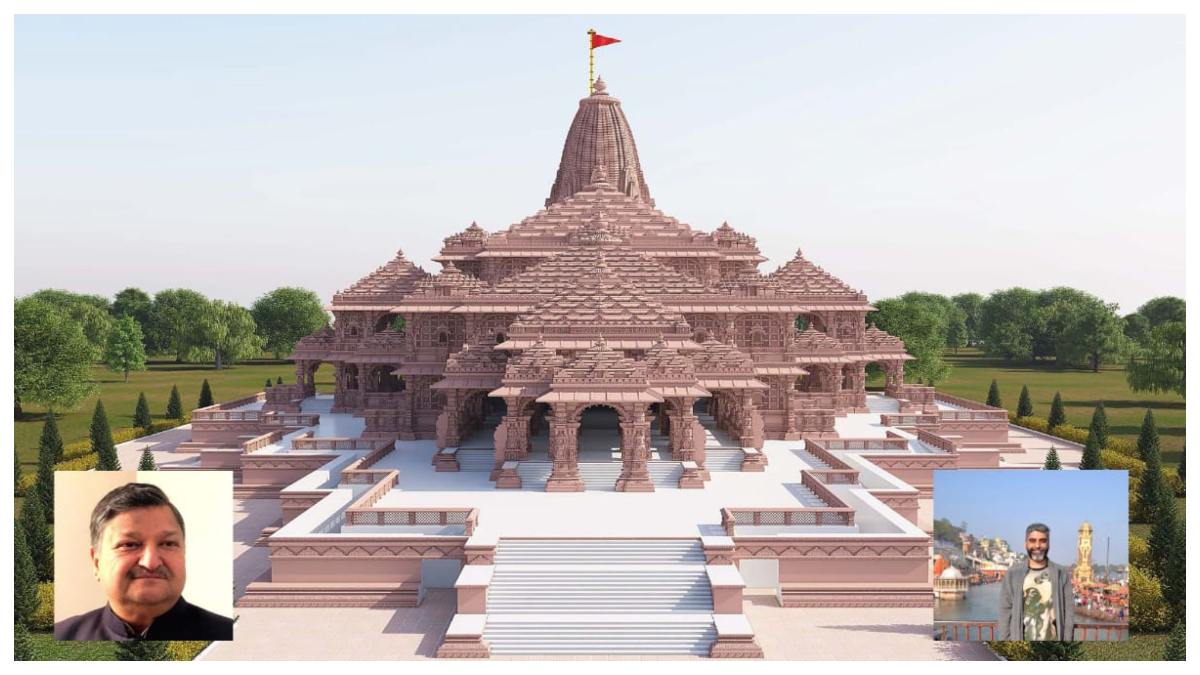– Dr Anil Agrawal, Member of Parliament, Rajya Sabha
– Sumit Kaushik, PhD candidate, O.P. Jindal Global University
“hoihi soi jo ram rachi raakha. ko kari tark badhaavey saakha.
aas kahi lage jaapan harinaama. gayi satee jahan prabhu sukhdhama.”
Goswami Tulsidas conveys in these verses from the Bal Kand of Shri Ramcharitmanas that all occurrences in this ephemeral realm unfold according to the divine will of Shri Ram. Human endeavours, no matter how profound, hold no sway in altering the predetermined course set forth by the divine orchestrations. The imminent inauguration of the magnificent Shri Ram Mandir in Ayodhya on the 22nd of January seems almost surreal, considering the arduous struggles faced by the Mandir movement. Yet, in reflection of these verses, it becomes apparent that this unfolding is beyond the realm of human influence. It is the divine will of Lord Shri Ram that has chosen the Honourable Prime Minister Narendra Modi to be the instrument of bringing him back to his resplendent abode in Ayodhya Dham.
Ayodhya is not merely witnessing a mega religious event or rapid urban development; it is undergoing a renaissance. The convergence of tradition and technology shapes a promising future for Ayodhya, and we consider ourselves privileged witnesses to this transformative journey. The Ayodhya Master Plan 2031 outlines projects amounting to ₹85,000 crores, aiming to overhaul the town’s infrastructure. Ayodhya is witnessing concerted efforts by both the central and state governments, led by the right-wing Bharatiya Janata Party (BJP). Their collective endeavours aim to elevate the city into a significant spiritual hub ahead of the upcoming national elections. Beyond the physical transformation, the temple signifies a promise of change, heralding Ayodhya’s evolution into a smart city—a captivating chapter in our history.
From the inauguration of the Maharishi Valmiki Airport to the revitalization of the railway station, Ayodhya has undergone a remarkable metamorphosis in anticipation of the temple’s inauguration on January 22. The state-of-the-art Maharishi Valmiki International Airport, with a 6,500 square metre terminal capable of handling approximately 10 lakh passengers annually, is a testament to this dedication. The strategic positioning of the airport facilitates easy access to and from major cities, including Delhi, Mumbai, Kolkata, Hyderabad, Bengaluru, Chennai, and Ahmedabad, anticipating the influx of daily visitors to the Shri Ram Temple. This development has already contributed significantly to Ayodhya’s economic prosperity. The surge in tourism is creating new avenues for employment, with numerous local businesses around the temple experiencing growth. These enterprises, ranging from small shops to larger establishments, are capitalising on the escalating demand for regional goods, services, accommodation, and transportation. The Uttar Pradesh Tourism Department reported a staggering surge in tourist numbers, with 2.36 crore domestic and 1,465 foreign visitors in the Ayodhya district in 2022, compared to 1.73 lakh domestic and zero foreign visitors in 2021—a remarkable 8,342.7 percent annual increase. The government’s commitment to connectivity is evident with the launch of two new Amrit Bharat trains and six Vande Bharat trains by PM Modi.
The resurgence of Shri Ram’s once-disputed capital has become a focal point of contemporary discussions. The endeavour to construct a temple in Ayodhya Dham transcends mere religious pride; it promises to metamorphose the city into a burgeoning tourism hub. Projections estimate that over three lakh people will make daily pilgrimages to Ayodhya in the years to come. The meticulous planning of the temple town draws inspiration from renowned international examples such as Vatican City, Cambodia, and Jerusalem, alongside domestic examples like Tirupati and Amritsar. In an unexpected shift, prominent corporate entities—from real estate developers to hotel owners and airlines—are redirecting their focus towards the temple town of Ayodhya. The burgeoning interest in this locale, not previously on their radar, is a testament to the rapid growth in overall infrastructure, poised to catalyse an anticipated surge in tourism.
Ayodhya’s forthcoming transformation is characterised by a visionary urban plan emphasising efficient land utilisation, congestion reduction, and a focal point on dharamshalas (inns) and homestays. This strategic initiative not only seeks to elevate the city’s infrastructure but also safeguards its profound historical and cultural heritage. The infusion of technology is contributing to the creation of a more efficient and sustainable urban environment. As Ayodhya stands at the nexus of historical and technological transformation, the city’s residents resonate with a shared sense of optimism. The consecration of the Shri Ram Mandir, coupled with the smart city initiatives, encapsulates a holistic approach to development—one that seamlessly integrates tradition and modernity.
In essence, the construction of the Shri Ram Mandir signifies not just the elevation of a religious monument but heralds a comprehensive transformation, positioning Ayodhya as an exemplar of harmonious urban development and economic prosperity, seamlessly blending religious sanctity with modern amenities. Human endeavours, no matter how profound, hold no sway in altering the predetermined course set forth by divine orchestrations. The imminent inauguration of the magnificent Shri Ram Mandir in Ayodhya on the 22nd of January seems almost surreal, considering the arduous struggles faced by the Mandir movement. Yet, in reflection of these verses, it becomes apparent that this unfolding is beyond the realm of human influence. It is the divine will of Lord Shri Ram that has chosen the Honourable Prime Minister Narendra Modi to be the instrument of bringing him back to his resplendent abode in Ayodhya Dham.
(The views expressed by the author are personal in nature and do not represent the views of News24)
